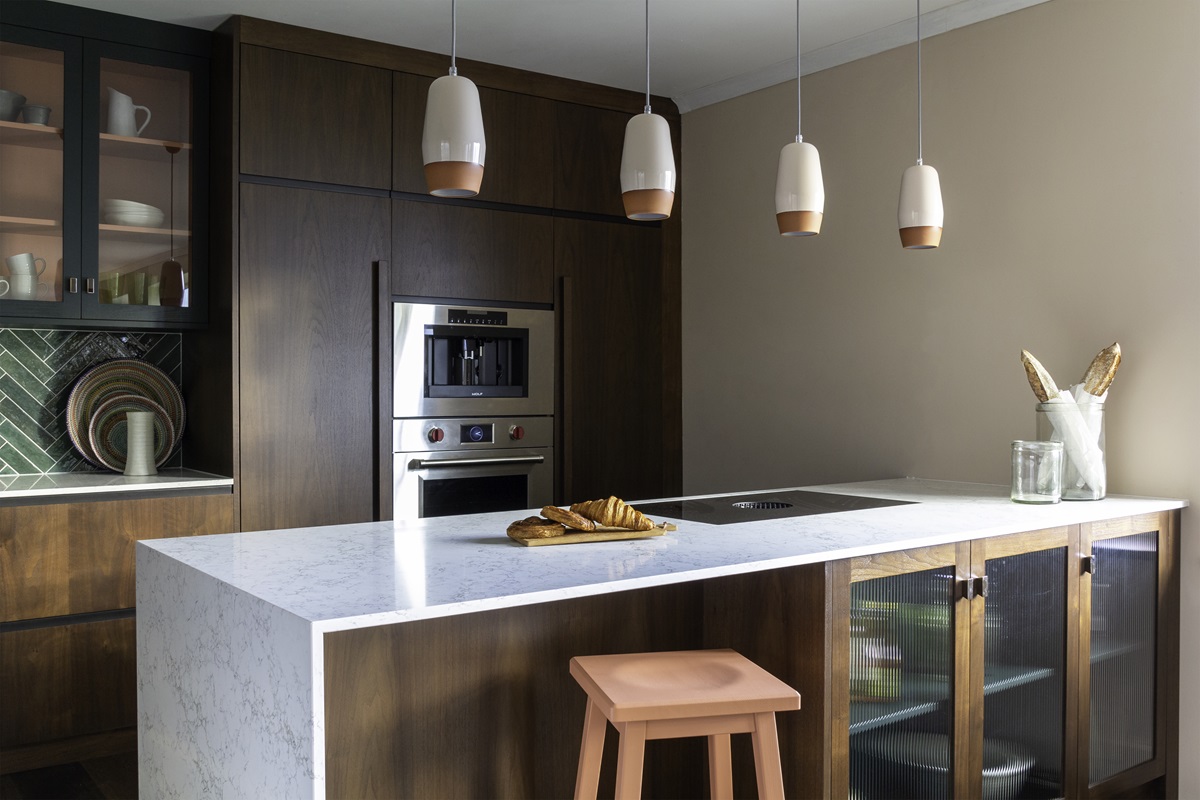 Contemporary, sleek, sensational – if you want to make a real splash in your kitchen, get a waterfall. But it isn’t only islands that benefit from the waterfall effect – here are five expert ideas for kitchen worktops that flow...
Contemporary, sleek, sensational – if you want to make a real splash in your kitchen, get a waterfall. But it isn’t only islands that benefit from the waterfall effect – here are five expert ideas for kitchen worktops that flow...
What is a waterfall island worktop?
In a kitchen, a waterfall is a contemporary design feature in which a worktop extends seamlessly from the horizontal to the vertical – usually down the sides of a kitchen island all the way to the floor.
The effect is visually striking, and in a quartz or marble finish the style looks very contemporary and sleek, and definitely has a premium feel.
But there are many ways of utilising the waterfall effect, including some you may not have considered. Here to inspire you are five different ideas for bringing the concept into your kitchen…
1) The showstopping home centrepiece
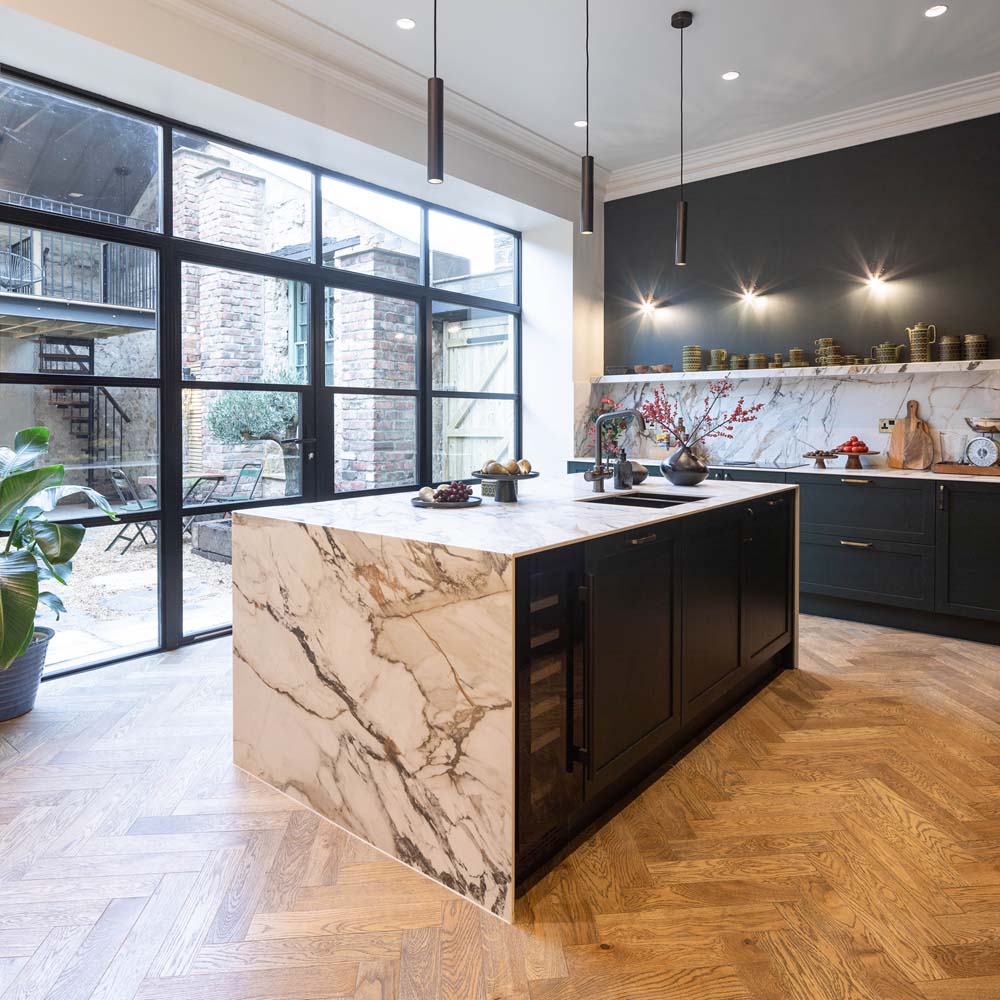
In a large kitchen or open plan space, an island usually becomes the central focal point – not just of the kitchen, but of the entire home. And if you want to make it a real showstopper – a visual as well as practical centrepiece – then the waterfall effect has all the drama and ‘wow factor’ you need.
The Henley kitchen above is based around a huge island. As the homeowner and designer Dawn Scargill explained when she featured on George Clarke’s Remarkable Renovations, the kitchen island was always intended to be the ‘family heart of the home’, and the waterfall effect, with the white marble worktop cascading down the sides of the Sandringham Pine cabinets, gives it a powerful, dominant presence in the room.
2) The waterfall peninsula – for visual separation
.jpg)
The waterfall effect isn’t only for freestanding islands – it can work brilliantly for peninsulas too (units with a worktop, like islands, but with one end attached to a wall).
In the Castle Mews kitchen, set in a large open plan living space, the white worktop flows down the side of the peninsula. As well as looking incredibly smart, it marks a clear visual separation between the kitchen working zone and the eating and entertaining zones.
(See more about kitchen zones in our post Kitchen zones – an alternative to the kitchen work triangle.)
3) The timber waterfall island - mixing traditional and contemporary
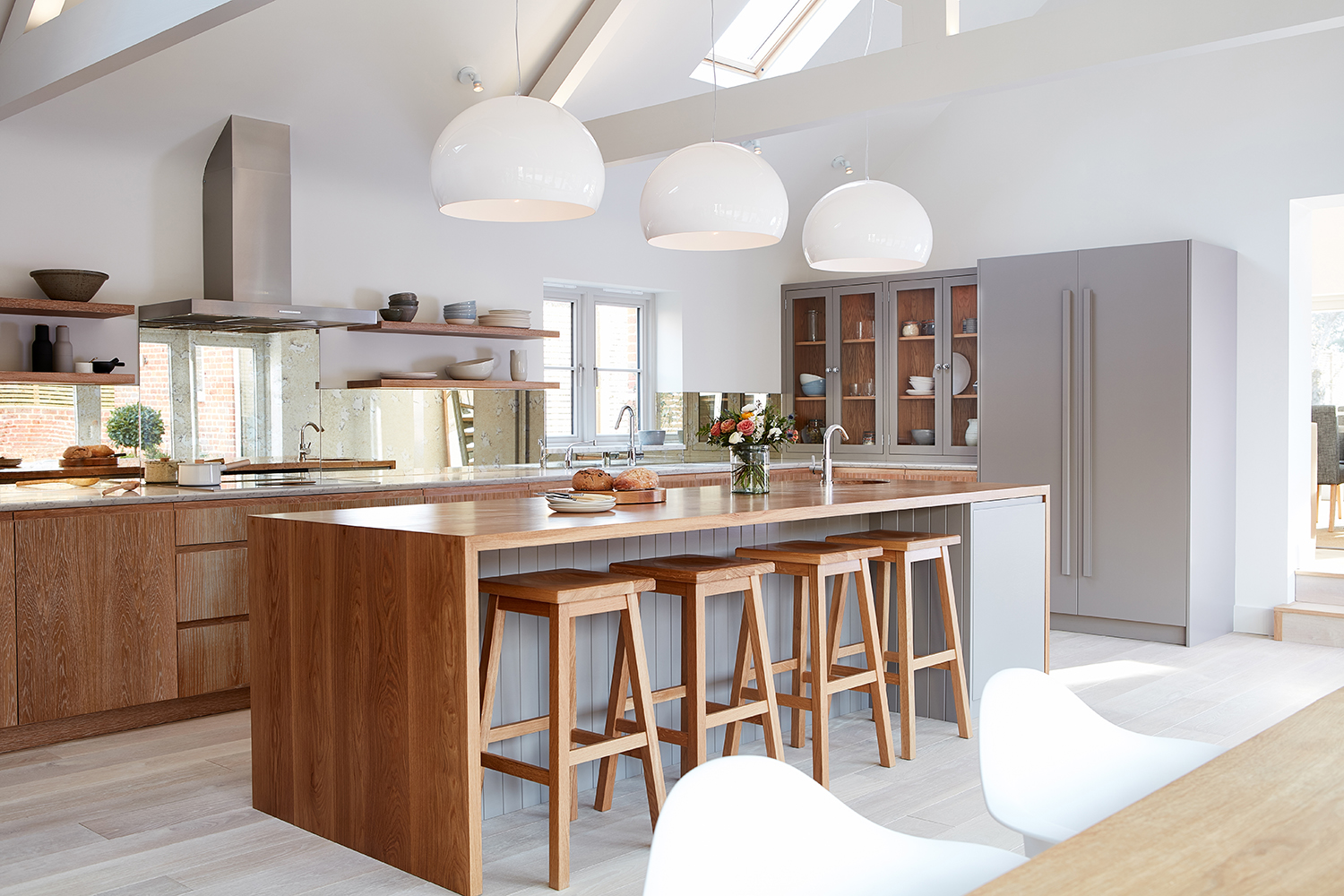
With its combination of oak and painted cabinetry, the Brancaster Marshes kitchen above has been described ‘as traditional kitchen for the 21st century’ – and a large element of that style comes from the island.
We normally associate waterfall worktops with marble or quartz, but in this case the island applies the same concept in a lovely oak. It gives the room a really solid, timeless feel – a celebration of craftsmanship and beautiful natural materials.
4) The waterfall bar
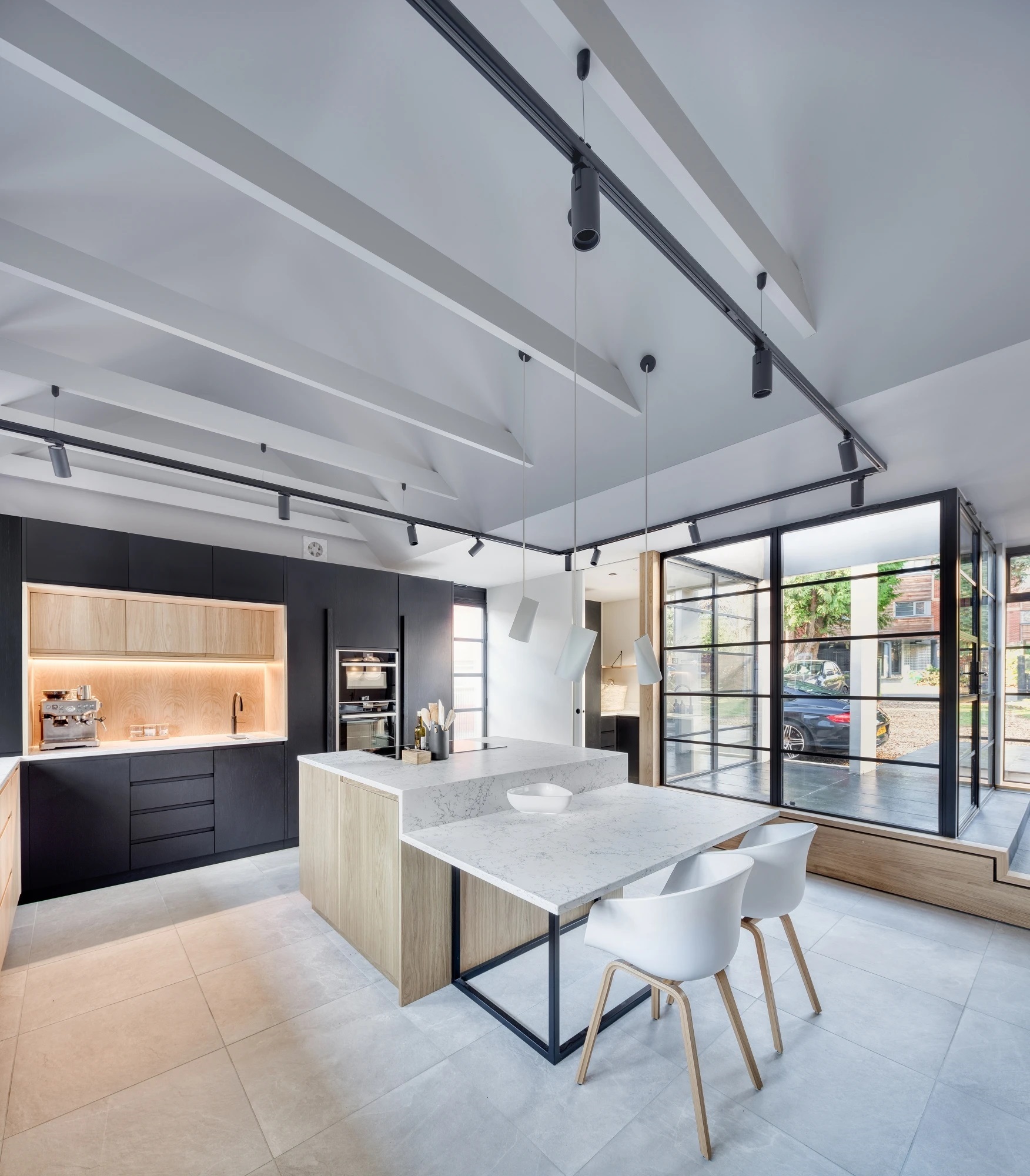
The Southwold kitchen – a lovely, light, Scandi-inspired space – takes an unusual approach to the waterfall concept. The island worktop flows over the edge, but instead of descending to the floor it opens out into another horizontal: a breakfast bar.
It’s a very modern effect, and it means that the cooking worktop and eating surface are separated and at different levels, yet seamlessly connected.
5) The waterfall splashback
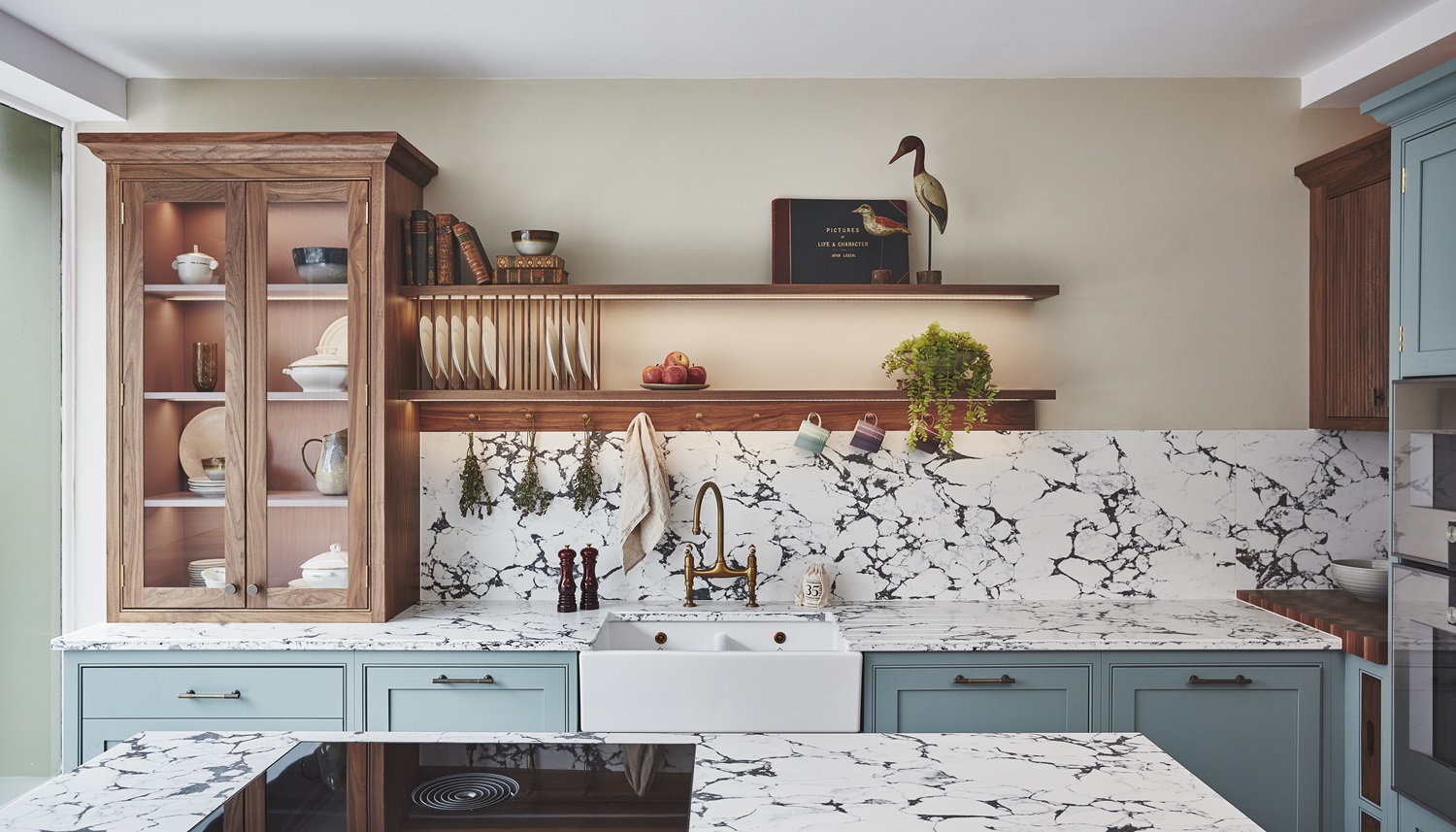
A stunning marbled splashback that waterfalls into the worktop in the Anmer kitchen
Finally, another innovative use of the ‘waterfall’ approach is the splashback-worktop cascade, as demonstrated here in the Anmer kitchen. It creates a solid block of colour, and a wonderful way to really show off the materials you love best.
As Naked Kitchens’ head of design Jayne Everett explained: “There’s definitely a trend for eye-catching marbled surfaces at the moment, and one way people are maximising that is to go for a worktop that continues seamlessly onto the splashbacks.
“It’s a bit like a waterfall island, where the worktop cascades down the sides onto the floor, except here it’s the splashbacks flowing onto the work surfaces. It’s incredibly effective as a visual statement.”
Feeling inspired? At Naked Kitchens, we can make the bespoke kitchen island for your life, precisely tailored to your needs and your space. Get started on creating your dream kitchen.
See also:
Kitchen islands - a guide to different styles and ways to use them
Kitchen zones – an alternative to the kitchen work triangle
Unusual kitchen colours – tips, ideas and inspiration
Choosing colours for your kitchen – an expert guide
Cleaning and caring for kitchen worktop surfaces - tips for all types of material























